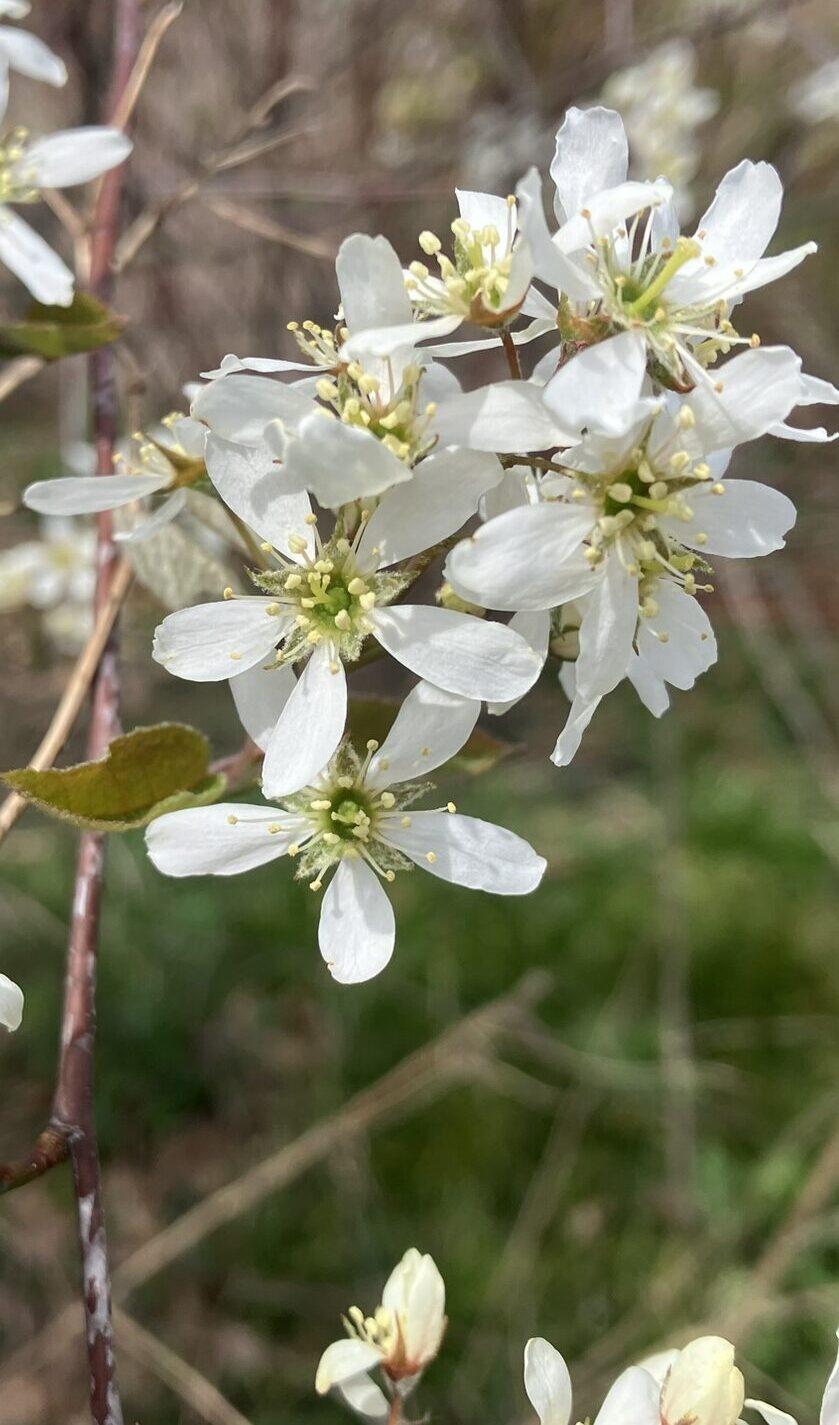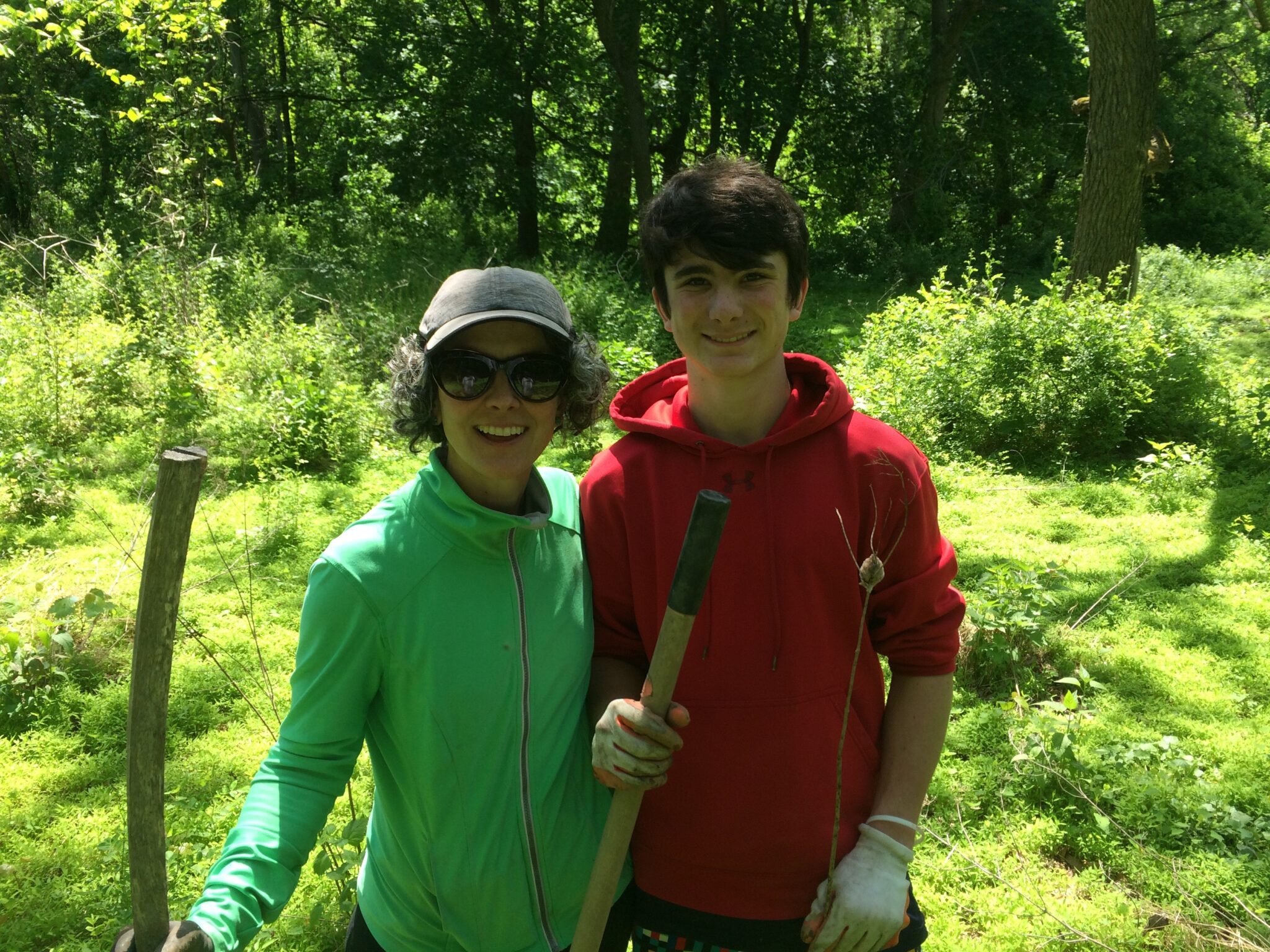Place your cursor on the image below to scroll through and learn about the impacts of road salt. If nothing appears or any images do not display properly, view the StoryMap here.
Category: Stormwater Resources
What To Plant
Many unbuilt spaces in our community are planted with lawn grass, which has thick, shallow roots that limit stormwater percolation and increase runoff. Lawn grass is great for handling foot traffic, but should only be planted in play areas and gathering spaces. Replacing unnecessary lawn grass with new gardens and planting more trees helps capture stormwater and reduce flooding.
The Conservancy encourages the use of vegetation indigenous to our region, known as native plants. New gardens can be expansions of existing gardens, new plots within lawns, or complete lawn replacements. Diverse ecosystems with roots growing to a range of different depths are best for stormwater absorption. Planting native plants is an easy way to achieve this mix, as they have evolved to grow in local soils.
Native plants also attract and host pollinators. Some plants are particularly attractive to pollinators, making them great additions to any garden. For more information about specific pollinator/plant connections, here is a helpful guide from Jesse Connor, a native plant expert based in New Jersey (many plants and pollinators in South Jersey are also native to Southeastern Pennsylvania). University of Delaware professor Doug Tallamy’s website and books detail additional connections if you are curious about plants not on the list.
An eastern tiger swallowtail on coastal Joe Pye (Eutrochium dubium)
Aggressive plants from other continents – commonly called invasive plants – can outcompete native plants and create monocultures. Invasive plants and non-native ornamentals often have shallow roots that do not retain soil well, decreasing water absorption and increasing erosion. Many noxious weeds – including Japanese barberry (Berberis thunbergii), English ivy (Hedera helix), and Japanese honeysuckle (Lonicera japonica) – are available at regular stores, so be careful when making new selections.
We are fortunate to have native plant retailers such as Good Host Plants and Redbud Native Nursery nearby to make purchasing native plants easy. Pollen Nation is a useful online nursery for those looking to plant larger areas. Here is a longer list of native plant retailers. If you are at a nursery and want to find out whether or not a plant is native to Pennsylvania, do a quick web search using the plant’s scientific name. While we cannot eliminate all invasive plants, we can increase native plant populations.
Rain Garden Guide
Place your cursor on the Rain Garden Story Map below to scroll through. If nothing appears, view the Story Map here.
Trees
Over the course of our area’s development, countless trees have been cut down without being replaced. Trees improve quality of life for all organisms, including people, so every tree lost has a tangible impact.
Tree roots, leaves, and stems slow down and soak up hundreds of gallons of stormwater. This water would otherwise rush downhill, picking up pollutants and contributing to flooding. Neighborhoods with fewer trees have more stormwater issues. After storms end, some of the absorbed water exits the trees through transpiration, which regulates nearby temperatures. Trees also help hold soil in place, slowing erosion.
Trees indigenous to our region provide habitat for countless organisms. A single native oak tree can host over 500 species of butterflies and moths; biodiversity has a direct correlation to disease reduction. On a larger scale, trees capture carbon – a prominent greenhouse gas – and improve air quality. A recent study in Philadelphia indicated that the mere presence of trees can improve mental health. Life as we know it could not exist without trees.
Protecting established trees is as important as planting new trees. Caring for trees can be as simple as cutting and removing vines and weeding selectively around the bases. While trees do not need to be pruned, strategic pruning can be beneficial in densely developed areas. Be sure to hire certified arborists to examine and prune your trees. Always avoid volcano mulching.
The Lancaster County Planning Commission created an extensive native tree and shrub list, which can be useful when selecting trees. If deers are a concern, the Pennsylvania Department of Conservation and Natural Resources has a helpful list of deer tolerant plants.


